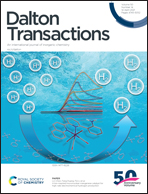Core–shell nanostructured Zn–Co–O@CoS arrays for high-performance hybrid supercapacitors†
Abstract
Although zinc oxide (ZnO) with wide distribution is one of the most attractive energy storage materials, the low electronic conductivity and insufficient active sites of bulk ZnO increase the internal resistance and reduce the capacity of electrodes for supercapacitors. Herein, CoS nanosheets are coated on the surface of heterostructured ZnO/Co3O4 nanowires to synthesize a core–shell Zn–Co–O@CoS electrode by a three-step method. The built-in electric field formed between ZnO and Co3O4 can enhance the conductivity of the composite electrode. The coating of amorphous CoS can also provide sufficient active sites and improve the chemical stability of ZnO/Co3O4 nanowires. As a result, the as-prepared Zn–Co–O@CoS electrode delivers a high specific capacity of 1190 C g−1, which is 7 times higher than that of the pristine ZnO electrode. Besides, a hybrid supercapacitor (HSC) with the Zn–Co–O@CoS electrode exhibits a high energy density of 56.8 W h kg−1 at a power density of 771.6 W kg−1. Furthermore, we assembled a solar-charging power system by combining the HSC and monocrystalline silicon plates to prove the practicability of the device, which can power a toy electric fan successfully. This study provides an effective idea and strategy for preparing Zn-based supercapacitor electrodes with low cost and deep discharge.



 Please wait while we load your content...
Please wait while we load your content...